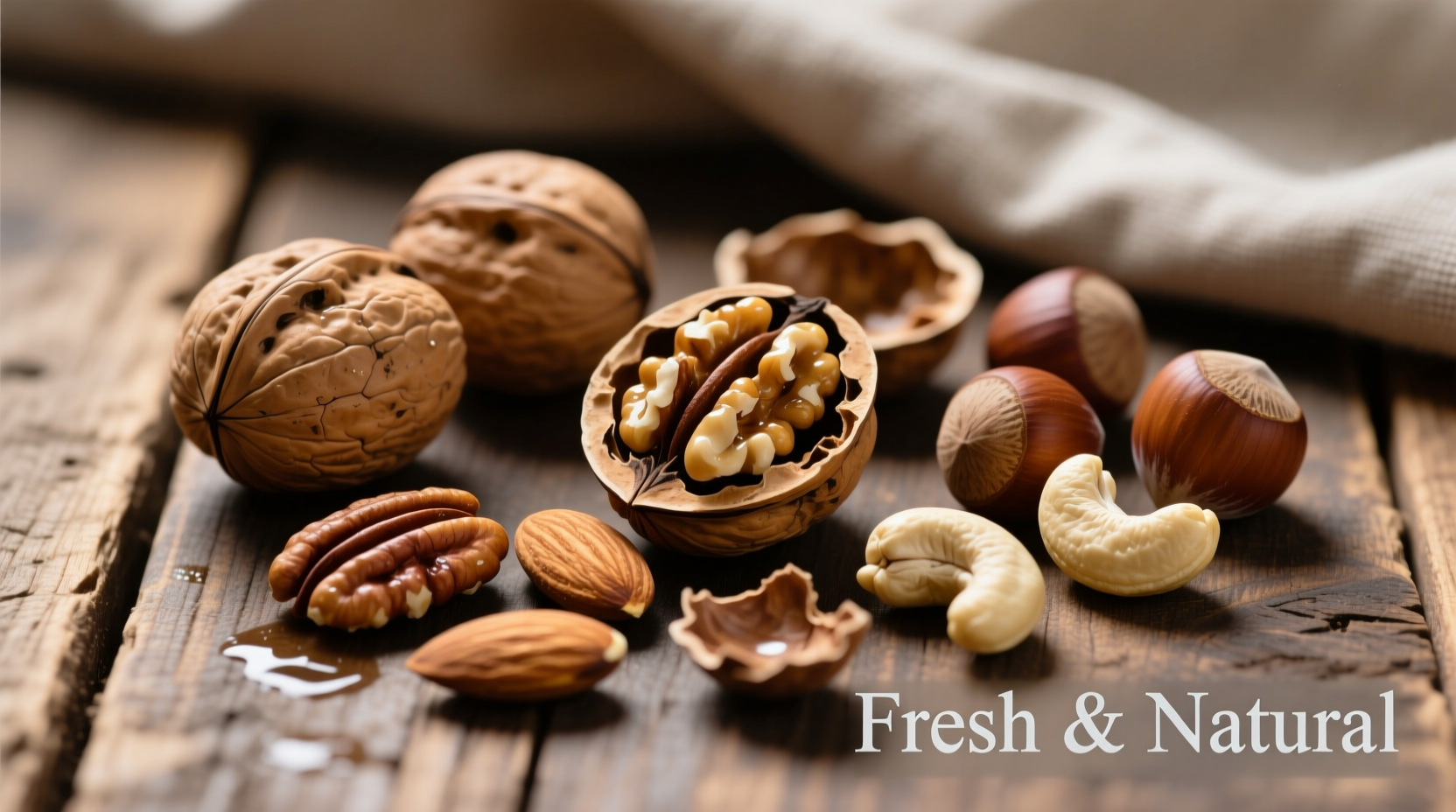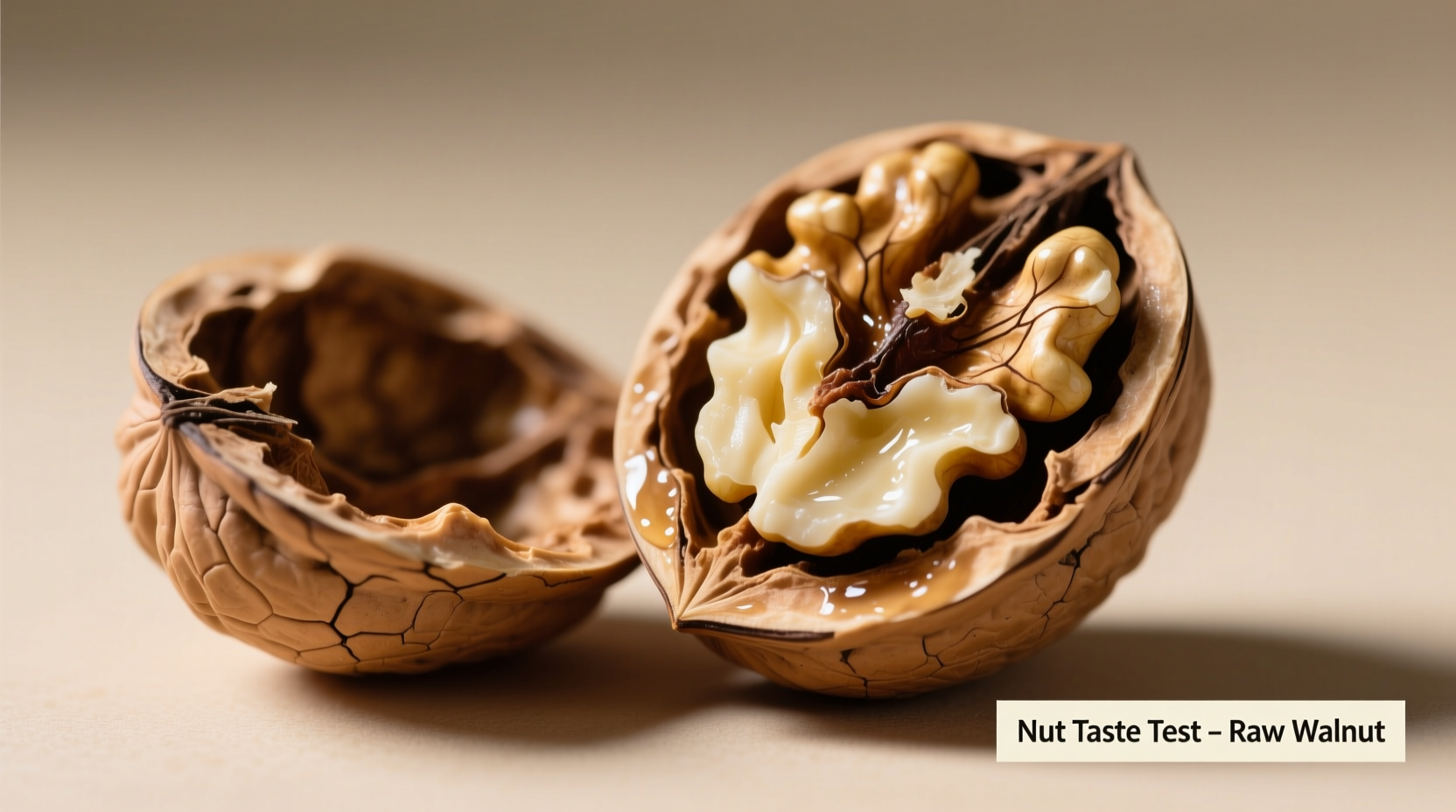Nuts generally offer a rich, buttery flavor with earthy undertones, though each variety has distinct taste characteristics. Almonds are mildly sweet and slightly grassy, walnuts deliver a deep earthiness with bitter notes, pecans provide buttery caramel notes, and cashews offer a delicate sweetness. Roasting enhances nutty flavors while freshness significantly impacts taste quality.
Understanding Nut Flavor Profiles: More Than Just “Nutty”
When you’ve ever wondered what does nut taste like, you’re asking about one of nature’s most complex flavor packages. Nuts aren’t just “nutty”—they contain hundreds of flavor compounds that create distinctive sensory experiences. This guide breaks down exactly what different nuts taste like, why they taste that way, and how to use their unique profiles in your cooking.
Why Nut Flavors Vary: The Science Behind Taste
Nut flavors stem from their fatty acid composition, natural sugars, and volatile compounds. Most nuts contain high levels of monounsaturated fats that deliver that signature rich mouthfeel. The specific balance of oleic acid (buttery), linoleic acid (grassy), and other compounds creates each nut’s distinctive profile. Environmental factors like soil composition and climate also influence flavor development—a fact confirmed by agricultural research from the University of Minnesota’s Nut Research Program.

How Freshness Changes Nut Taste Experience
One critical factor often overlooked when considering what do raw nuts taste like versus stale ones is freshness. Nuts contain high oil content that oxidizes over time, dramatically altering flavor:
| Time Since Harvest | Flavor Characteristics | Texture Changes |
|---|---|---|
| Fresh (0-2 weeks) | Vibrant, complex notes with natural sweetness | Crisp, satisfying crunch |
| 3-6 weeks | Muted flavors, slight cardboard notes | Less crisp, slightly leathery |
| 2+ months | Strong rancidity, bitter off-flavors | Soft, sometimes oily residue |
This timeline explains why why do nuts taste different when roasted is such a common question—freshness directly impacts how roasting transforms flavor compounds. The USDA recommends storing shelled nuts in airtight containers in the refrigerator (up to 4 months) or freezer (up to 1 year) to maintain optimal taste.
Individual Nut Taste Profiles: A Culinary Reference
Understanding what does each nut taste like helps you select the right variety for your recipes. Here’s what professional chefs and food scientists note about common varieties:
Almonds: The Versatile Neutral
Raw almonds offer a mild sweetness with subtle grassy notes and very low bitterness. When roasted, they develop warm toasty flavors with hints of vanilla. Their neutral profile makes them ideal for almond milk and marzipan. California almonds (the most widely available) tend sweeter than European varieties due to climate differences.
Walnuts: Earthy Complexity
Walnuts deliver the most distinctive flavor among common nuts—deeply earthy with coffee-like bitterness and woodsy notes. The skin contributes significant tannins, which is why many recipes call for toasted walnuts (reducing bitterness by 30-40% according to USDA FoodData Central research). Their complex profile shines in baked goods and pesto.
Pecans: Natural Caramel
Often confused with walnuts, pecans offer a distinctly sweeter profile with pronounced buttery notes and natural caramel undertones. Their higher fat content (72% vs walnuts’ 65%) creates a richer mouthfeel. Southern pecans typically taste sweeter than Northern varieties due to soil composition—a finding documented by researchers at Texas A&M’s Pecan Sciences Program.
Cashews: Delicate Sweetness
Cashews provide the mildest, sweetest profile among common nuts with virtually no bitterness. Their delicate flavor contains subtle tropical notes (reflecting their botanical relationship to mangoes). Raw cashews aren’t actually sold raw—they’re always lightly steamed to remove urushiol (a skin irritant), which slightly mellows their natural tang.
How Roasting Transforms Nut Flavors
The question what does roasted nut taste like compared to raw reveals one of cooking’s most fascinating chemical processes. Roasting triggers the Maillard reaction, creating new flavor compounds:
- Almonds: Raw→mildly sweet; Roasted→toasty with pronounced nuttiness
- Walnuts: Raw→earthy with bitter notes; Roasted→warmer, less bitter, coffee-like
- Pecans: Raw→buttery; Roasted→caramelized with deeper richness
- Macadamias: Raw→buttery; Roasted→intensified butter notes with subtle smokiness
Professional chefs recommend roasting nuts at 350°F for 8-12 minutes, watching closely during the last few minutes when flavor transformation accelerates rapidly. Over-roasting creates acrid, burnt flavors that dominate dishes.
Practical Applications: Matching Nuts to Your Culinary Needs
Knowing what different nuts taste like helps you make smarter choices in the kitchen:
For Baking
Use pecans in sweet applications where their caramel notes shine (pumpkin bread, pecan pie). Walnuts work better in robust recipes like banana bread where their earthiness complements spices. Almonds provide neutral structure in macarons and frangipane.
For Savory Dishes
Pine nuts’ resinous notes enhance Mediterranean pesto, while cashews’ mild sweetness balances spicy Asian dishes. Walnuts add depth to mushroom sauces, and pistachios provide bright contrast in Middle Eastern rice dishes.
For Beverages and Dairy Alternatives
Almonds create the most neutral milk base, while cashews produce creamier texture. Hazelnuts impart distinctive flavor to coffee creamers. For best results, always use freshly roasted nuts when making nut milks—the flavor difference is dramatic.
Avoiding Common Nut Flavor Pitfalls
Many home cooks wonder why do my nuts taste bitter or rancid. These issues typically stem from:
- Improper storage: Nuts exposed to light/heat oxidize faster
- Over-roasting: Just 60-90 seconds too long creates burnt flavors
- Old stock: Grocery store nuts may have been sitting for months
- Moisture exposure: Causes sogginess and mold risk
Always perform a quick sensory check before using nuts: crack one open and smell for any paint-like or cardboard odors (signs of rancidity). Fresh nuts should smell sweet and clean, never musty.
Expert Tips for Maximizing Nut Flavor
Professional chefs employ these techniques to enhance what nuts taste like in recipes:
- Toast in dry pan: Better control than oven roasting for small batches
- Cool completely: Prevents residual heat from overcooking
- Grind just before use: Preserves volatile flavor compounds
- Pair with complementary flavors: Walnuts with blue cheese, pecans with bourbon
Remember that salt isn’t just for seasoning—it actually enhances nutty flavors by suppressing bitterness. A light sprinkle after roasting makes flavors pop without overpowering.
Final Flavor Takeaways
When exploring what does nut taste like, remember that freshness, preparation method, and variety all dramatically impact flavor. The best approach is treating nuts like specialty coffee beans—source carefully, store properly, and prepare thoughtfully. Keep this reference handy next time you’re selecting nuts for a recipe, and you’ll consistently achieve the flavor profile you’re seeking.











 浙公网安备
33010002000092号
浙公网安备
33010002000092号 浙B2-20120091-4
浙B2-20120091-4